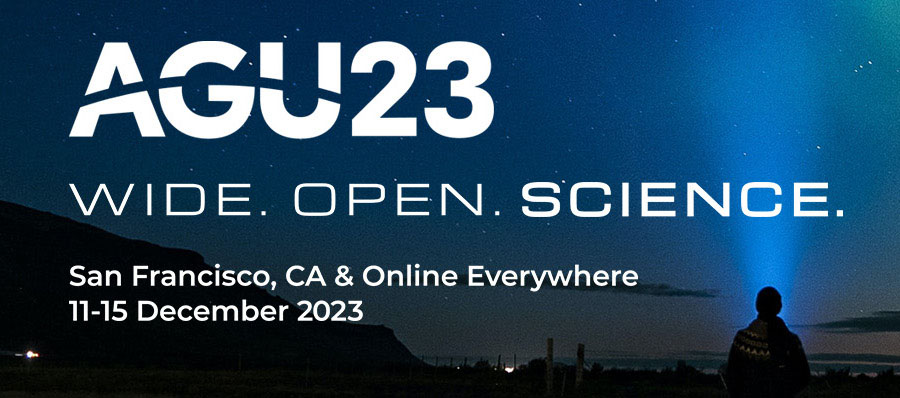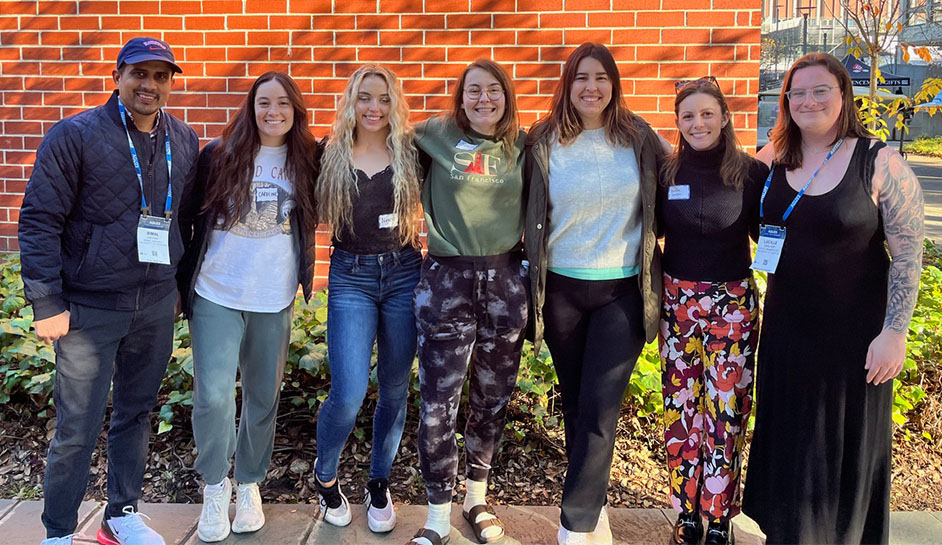Largest Geosciences Meeting in North America
Faculty, graduate students, and undergraduates from the Department of Earth and Atmospheric Sciences (EAS) traveled to San Francisco to present their research results at the largest, annual geosciences meeting in North America.

The American Geophysical Union (AGU) Fall Meeting, held at the Moscone Center in downtown San Francisco December 11-15, 2023, attracted more than 20,000 international participants of whom about 7,000 are graduate and undergraduate students. For decades, the AGU Fall meeting was held in San Francisco and was last held there in person in 2019 prior to the COVID-19 pandemic. The meeting became virtual during the pandemic, and this year’s event was the largest and fully in-person Fall AGU meeting since 2019.
The AGU, which marked its 100th anniversary in 2023, is a nonprofit organization that includes 130,000 members working in four fundamental areas: atmospheric and ocean sciences, solid-Earth sciences, hydrologic sciences, and space science. The organization’s headquarters are in Washington, D.C.
Fifty-seven EAS Presentations
The 57 presentations from UH’s EAS department showcased the broad scope of active research spanning topics from subsurface mapping and igneous petrology to seismology and atmospheric sciences. The titles and authors of the UH posters and talks, which included 11 EAS faculty presentations and 46 EAS M.S. and Ph.D. student presentations are listed in this document.
About half of the presentations were on whole earth geology and geophysics, and the other half were on atmospheric sciences. The presentations provided a 2023 snapshot of the combined research effort of the department.
Faculty Organize Several Meeting-Related Activities
Several faculty members organized other meeting-related activities. EAS Chair Tom Lapen, Assistant Chair Julia Wellner, and EAS administrator Sarai Hernandez organized a UH EAS information booth in an academic row of the exhibit’s hall at the Moscone Center. Drs. Lapen and Wellner also organized an evening UH Alumni and Friends reception on December 14 at the Chieftain - Irish Pub and Restaurant.

Dr. Brandee Carlson led a large group of UH undergraduates, graduate students and postdocs who presented on fluvial-deltaic sedimentary delivery to coasts in Greenland and Texas. While in the Bay area, Dr. Carlson coordinated their attendance at the annual meeting of the Gilbert Club, which is a meeting of ~150 geomorphologists the Saturday after AGU. It was hosted at the University of California, Berkeley. The Gilbert Club meeting includes three, hour-long seminars and includes time for geomorphologists to foster friendships and collaborative efforts.
Dr. James Flynn led a group large group of EAS atmospheric science M.S. and Ph.D. graduate students who reported on wintertime chemistry near the Arctic, the various TRACER atmospheric campaigns from Houston in 2021-22, and the rapid response deployment to catch the stratospheric plume from the Hunga-Tonga eruption.
Dr. Paul Mann led a group of two EAS grad students and one postdoc from the Conjugate Basins, Tectonics and Hydrocarbons group who presented on marine geophysical studies in the Colombian basin, Bahamas carbonate platform, and northwestern Africa. He led this same group on a one-day field trip to visit exposures of Franciscan accretionary prism rocks and the San Andreas fault in Marin County and the Point Reyes Peninsula.